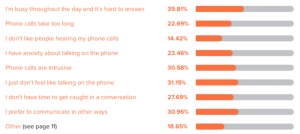As content marketing continues to drive many of today’s integrated marketing programs, perfecting writing skills for the various marketing channels has never been more critical. Copy for a brochure is not the same as copy for a press release, white paper or social media. Copy development for a website has its own voice or tone. The great part about web copy is that it can be changed and adjusted on the fly and new messages and call to actions can be tested dynamically for each campaign or target audience. The hard part about web copy is that you need to think about the SEO implications of the text and how what is put on each page affects the visibility of a website or web page in a search engine’s “organic” (un-paid) search results.
SEO is an animal. It is dynamic, always evolving, and quite frankly one of the most technical and, as a result, more difficult aspects of digital marketing. SEO can also often be overlooked. This is often because the role of keeping up with the SEO best practices resides with many people from both technical teams and content developers. There are standard best practices today that, no matter who your audience is or the purpose of your site, should be applied if you are looking to attract visitors.
Off-page SEO: Linking & Content Marketing
Websites can be optimized through activity that does not even occur on your site. For example, links from third parties in media placements or links from partners can drive additional, credible traffic. Additionally, third party content that results from a contributed article, a blog post on another site, a video or social media, could also drive traffic.
Research: Targets & Keywords
Compiling web copy can be a daunting task. However, what you say is just as important as how you say it.
As with every marketing channel, copy that is optimized for SEO takes into account the target audience or audiences. Identify the audience the pain point they are looking to solve and what unique benefits will drive interest in your product or service. These benefits and differentiators will inform calls to action that are effective and create engagement. Traditional SEO copy writing focused on keywords. However, these are usually way too broad and have too much competition – the result: you’re lost.
Today, it is best to optimize keyphrases for long tail search queries in order to attract highly targeted traffic. This takes time and research to identify the most popular and common phrases. In addition to keyword and keyphrase research, Google Adwords provides valuable ranking and insight into the popularity of terms, helping to formulate intelligent decisions on what phrases and words to incorporate on the web page copy.
Technical Aspects of SEO Copy
While dated, the Google SEO Starter guide is a great source of information for the development of optimized content.
This guide breaks down important best practices on how to:
• Create unique, accurate page titles
• Make use of the “description” meta tag • Structure your URLs logically
• Write better anchor text • Make use of image alts
Metadata still plays an indirect role in optimizing SEO copy. Metadata is the information within thetag code that doesn’t get displayed on a webpage, but is used by search engines. Metadata influences Google’s and Bing’s algorithms directly. However, user behavior such as click-through rate and dwell time does. Meta descriptions factor into which results a user clicks. Additionally, as the copy of the webpage comes together, keep in mind that the main body of the text is the most important – not the sidebars, headers or call outs.
Composing Optimized Copy
With the keywords identified and the plan of attack outlined, it is time to start composing the text for the webpages.
For each page, target 2-3 keyphrases, include headers (with keyphrases incorporated), and give headers hierarchical structure. In the body of the copy, weave in keyphrases, synonyms and natural variants.
Implementation
Check your work. There are plug-ins available to verify and confirm that best practices are intact, such as Yoast for WordPress. Yoast is installed during development, manages on-page SEO and publishes XML sitemaps for search engines to crawl. Once your site is developed and ready to launch, run a pre-launch check to make sure everything is ready to launch.
Now you’re ready to be found!
(156)
Report Post




